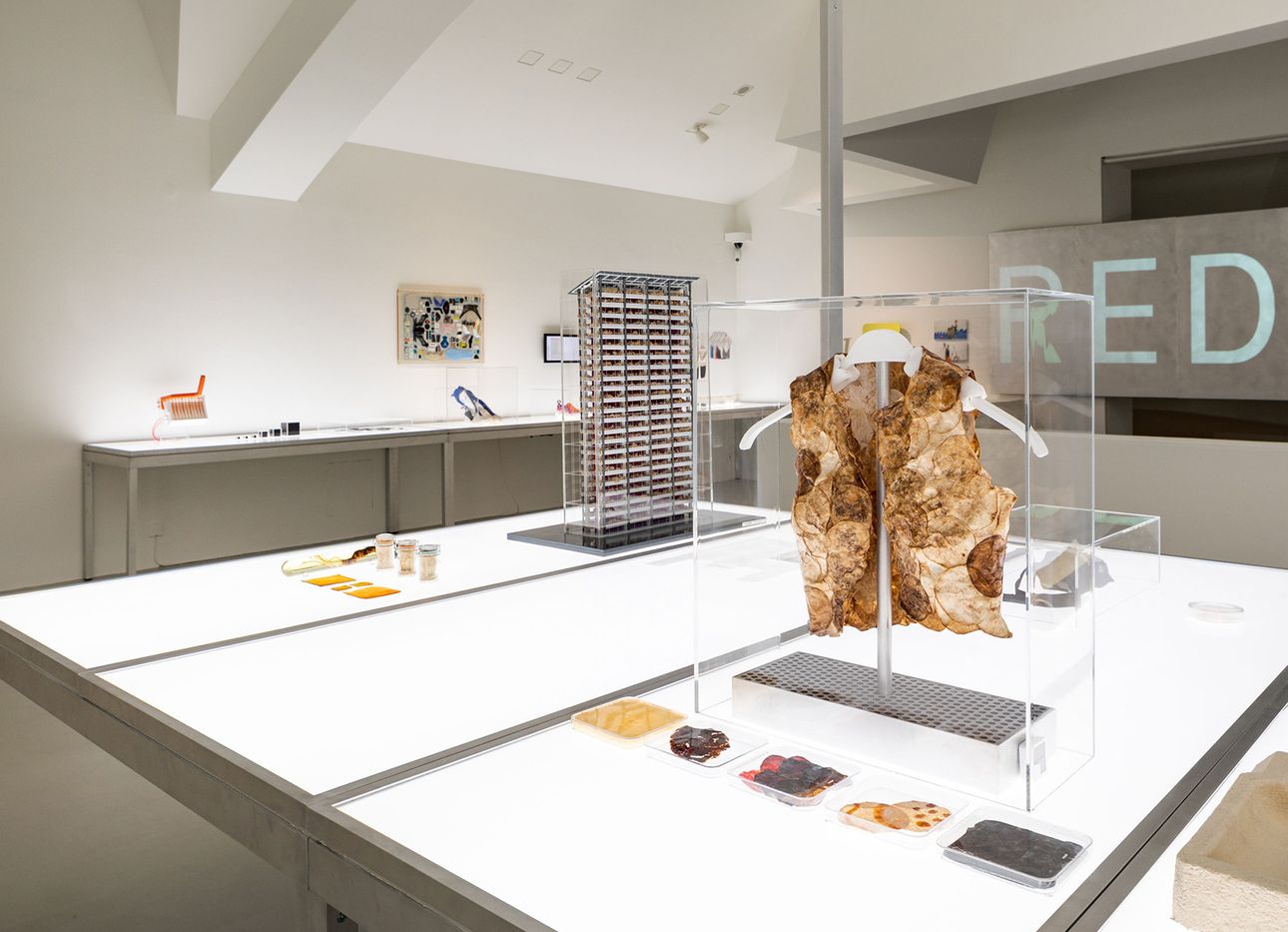
At Germany’s Vitra Design Museum, an Exhibition Considers the Promises and Problems of Plastic
In the early 1860s, an advertisement in The New York Times offered $10,000 to anyone who could invent a new material for billiard balls. At the time, elephant ivory was the material of choice for the opaque, solid spheres used for the then increasingly popular game, but manufacturers began to realize that the material was a limited resource, prompting a search for a replacement material. Among the notable yet not-quite-sufficient entries was a hard, malleable material invented in 1869 by John Wesley Hyatt called celluloid, which was made by mixing the synthetic compound nitrocellulose with camphor, a waxy substance found in the wood of the camphor laurel tree. Though celluloid would later prove to be less than ideal for billiard balls—due to the substance's flammability, celluloid balls were said to at times produce a mild explosion upon impact—it would become the first commercially successful synthetic plastic. Much like the innovations of Bakelite (1907), plexiglass (1933), and nylon (1935) that followed it, this revolutionary new material would later come to demonstrate incredible versatility and democratizing power.
The past, present, and future of plastic are explored in an exhibition at the Vitra Design Museum in Weil am Rhein, Germany, titled “Plastic: Remaking Our World” (on view through September 4). Organized by the museum’s chief curator Jochen Eisenbrand and assistant curator Mea Hoffmann—together with the V&A Dundee’s Charlotte Hale and Lauren Bassam, V&A London’s Johanna Agerman Ross and Corinna Gardner, and Lisbon’s Museum of Art, Architecture and Technology’s Anniina Koivu—the show doesn’t point fingers. Rather, it diligently unpacks the controversial yet epoch-making material’s evolution from multiple perspectives, and outlines its many uses and striking environmental impacts. By telling the comprehensive story of the material, the exhibition shows how societies became so thoroughly plastic-dependent—and suggests where we can go from here.
The show begins with a split-screen video installation that contrasts images of nature with footage of plastic production filmed throughout the past century. The work nods toward plastic’s multiple, often contradictory implications: While the material allows for convenience, speed, affordability, and inventive shapes, it also evokes a sense of cheapness and omnipresence, demonstrated by the rise of single-use plastics in the 1960s and the throwaway culture that ensued. A detailed chronicle of plastic follows, in three parts: The first looks at the utopian ideals symbolized by plastic in the early- to mid-20th century; the second traces the changing cultural perceptions of plastic from the late-19th century (when it was derived from animal byproducts) to the 1920s (when plastics expanded into the petrochemical industry via companies including Dow and DuPont) to the late 1940s (when materials developed and mass-produced for the Second World War, such as nylon and plexiglass, were marketed for domestic uses) to the present-day prevalence of the material. A final section surveys ways of reducing global plastic waste, and spotlights various repair and reuse efforts including The Ocean Cleanup project and The Great Bubble Barrier, which was created to filter plastic waste from rivers and bodies of water.
Underscoring the importance of a concerted interdisciplinary effort in order to solve the plastic problem, the exhibition incorporates voices from a range of activists, policy-makers, designers, and artists who are working to develop a new path forward. These individuals highlight the nuances of plastic: Some advocate for completely abolishing plastic use, for example, while others suggest a less stringent approach that is rooted in identifying areas where plastic is essential—such as the medical industry, where single-use plastics are crucial for making syringes, applicators, drug tests, and bandages—and where it can be replaced with biodegradable or easily recyclable materials. Also included are features on bioengineers who investigate the commercial viability of bioplastics, such as those derived from algae and mycelium. One notable practitioner is Amir Afshar, co-founder of Shellworks, a London-based biotech startup that develops compostable alternatives to plastic using microbial fermentation.
The location of the exhibition is itself part of the story of plastic in architecture and design. The museum is operated by Vitra, the Swiss furniture company that, for more than 70 years, has manufactured some of the most celebrated and widely recognized designs (by luminaries such as Charles and Ray Eames and Verner Panton) of the last century—many of them made from plastic. The company’s approach to formulating a sustainable practice within its use of petroleum-based plastics is to create furniture that is meant to last. Vitra’s production practices consider the timelessness of each design, as well as its versatility, with an emphasis on high-quality construction, superior manufacturing, and durable materials, all of which help extend the life cycle of its products. (This approach is also suggested in projects throughout the exhibition.) Vitra continues to research uses for bioplastics to reduce its use of virgin plastic, and currently has several designs—including Barber Osgerby’s Tip Ton RE chair and Konstantin Grcic’s Chap stool—that are made entirely from recycled plastic.
By spotlighting the promises and problems of plastic, “Plastic: Remaking Our World” initiates a candid conversation about the realities of the material’s use. In doing so, it proposes practical, optimistic ways of thinking about how we might change our approach to plastic for the better.